Spaceships use physics, not Hollywood magic, to visit distant worlds
Escaping Earth’s gravity is difficult, but some basic laws of science make interplanetary travel possible
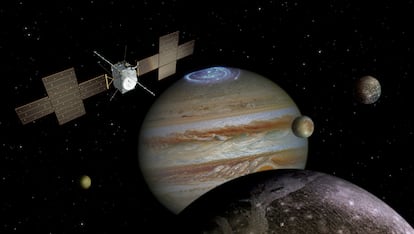
To illustrate how hard it is to launch a spacecraft, we can use familiar vehicles as examples. A standard car burns about 13 gallons (50 liters) of gasoline to travel about 370 miles (600 kilometers) at a maximum speed of 74 miles (120 kilometers) per hour. An Airbus A350 passenger airplane uses about 90 tons of fuel to travel 9,320 miles (15,000 kilometers) at speeds of up to 620 miles (1,000 kilometers) per hour. In other words, to cover a distance 25 times greater, an airplane uses 1,800 times more fuel to travel eight times faster than a car. Conclusion: the amount of fuel needed to reach faster speeds increases exponentially.
To launch a spacecraft beyond the Earth’s atmosphere, we have to use the parabolic trajectory we learned about in school. But once it reaches the peak of the parabola, we have to make sure it doesn’t start falling back to Earth. The speed needed to launch something into low Earth orbit is 17,400 miles (28,800 kilometers) per hour. But if the goal is to go beyond that, we need to increase our speed to almost 25,000 miles (40,000 kilometers) per hour. That’s 40 times faster than an A350 airplane. Imagine how much fuel is needed for an engine so much more powerful than an airplane.
At the end of the 19th century, when space travel was still little more than a dream, Konstantin Tsiolkovsky figured it out mathematically. The Russian physicist studied the physical limitations of a contraption powered by a simple engine, trying to attain a speed that would enable it to escape the Earth’s gravitational pull. Tsiolkovsky determined that the larger the thing going into orbit, the longer it will take for the engine to accelerate to the required speed. And if the engine has to run longer, then it needs more fuel, which makes it heavier, and then the engine has to run even longer. Also, if we want to launch a payload besides the engine and its fuel, part of the rocket’s mass will hinder instead of help acceleration.
Tsiolkovsky wrote what is called the rocket equation, which tells us that the problem of accelerating a rocket into low Earth orbit or beyond quickly reaches a terminus, since fuel consumption escalates exponentially in proportion to the required velocity.
These laws of physics and engineering limitations meant space explorers had to come up with viable workarounds. The first was contributed by Tsiolkovsky, who, after writing the rocket equation, began searching for ways to fulfill our space travel dreams. He developed the theory known today as serial staging: a rocket that releases ballast in several stages, each one powered by its own engine.
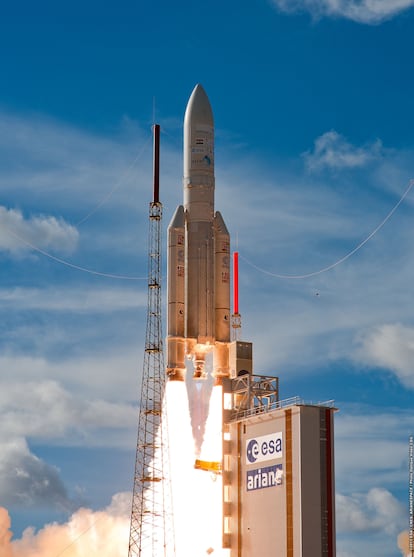
In mid-April, the European Space Agency’s (ESA) launched the Ariane 5 rocket carrying the Jupiter Icy Moons Explorer, nicknamed Juice. During the launch, an extremely powerful primary engine assisted by two other solid-fuel boosters accelerated the rocket and its payload to 5,600 miles (9,000 kilometers) per hour in about two minutes, putting it at 37 miles (60 kilometers) above the Earth’s surface. It then discarded the two empty boosters, which now only contributed dead mass and were not reusable. With less mass to slow the rocket and thinner air with less resistance, the Ariane 5 could continue speeding up to 15,500 miles (25,000 kilometers) per hour at an altitude of about 93 miles (150 kilometers).
A second stage was launched at that point, speeding up the rocket for the next 15 minutes to almost 20,000 miles (32,000 kilometers) per hour. The Ariane 5 could leave the Earth by using serial staging, the first tactic to enable space exploration from the Earth. It’s nothing like the silent, hovering alien spacecraft we see in movies and TV series like Independence Day and V. We’re still a long way from having a propulsion system that can do that.
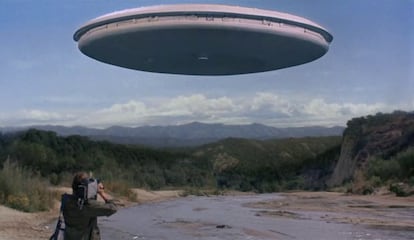
The problem of mass (and thus fuel) limitations is also front and center in another space exploration tactic first devised by Yuri Kondratyuk, a Ukrainian who came up with quite a few ideas 100 years ago.
Despite what we’ve seen in the movies, lunar spacecraft and planetary probes don’t run their engines continuously. They only fire them for a few seconds at precise moments during trips that can last for years. A spacecraft is not a car — it’s not propelled by an engine. The nearest gravitational field does most of the work. You can’t have an engine running for years on million-mile trips. But if you only let gravity pull you along, you’ll end up stuck in the gravitational field — another tactic is needed to get to the destination.
Now imagine you’re in a car, going around a curve. If you speed up too much in the curve, the car will most likely be thrown off the road. This is exactly what space probes do when they travel to distant planets and satellites. First, the probe gets into a stable orbit around the Sun and circles around to get close to a planet, say Venus. As it approaches Venus, space-time bends because of the planet’s gravity and the probe’s trajectory changes and gains speed. If it fires its engines at the right time, it will speed up in the curve like the car, and hurtle into another wider and faster orbit to some other part of the solar system.
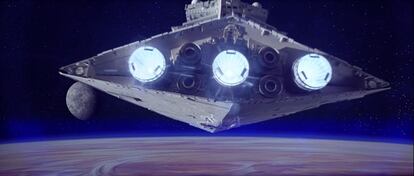
Yuri Kondratyuk figured out that a space probe can use gravitational force instead of its engines to change direction. Now imagine Juice in close orbit around the Sun. If nothing else happened, that’s where it would stay. But if we do our calculations right and synchronize the trajectory of the spacecraft with another planet, it will give the probe a nudge in another direction. The planet will continue merrily on its course, but the probe will gain speed and move into a wider orbit, traveling even faster than the velocity needed to escape the solar system. You don’t need to tell Voyagers 1 and 2 about that!
Juice will take advantage of these gravitational nudges for six years. The problem then becomes one of slowing down to stop and explore a distant planet. The probe can circle around until it’s close enough for the planet’s gravity to slow it down. Then it can use short thruster bursts to enter orbit around the planet. The Galileo, Cassini and Juno missions all used this tactic, as will Juice when it reaches Jupiter and Ganymede, its largest moon.
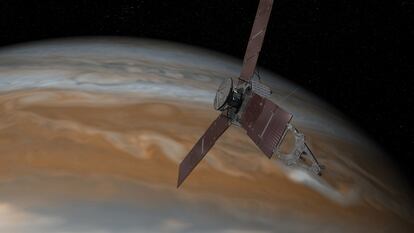
For a mission like the one Juice is on, technological limitations can be overcome using almost basic scientific knowledge because they involve simple laws of physics like universal gravitation and conservation of linear momentum. Simple things that enable us to visit distant worlds!
Sign up for our weekly newsletter to get more English-language news coverage from EL PAÍS USA Edition
Tu suscripción se está usando en otro dispositivo
¿Quieres añadir otro usuario a tu suscripción?
Si continúas leyendo en este dispositivo, no se podrá leer en el otro.
FlechaTu suscripción se está usando en otro dispositivo y solo puedes acceder a EL PAÍS desde un dispositivo a la vez.
Si quieres compartir tu cuenta, cambia tu suscripción a la modalidad Premium, así podrás añadir otro usuario. Cada uno accederá con su propia cuenta de email, lo que os permitirá personalizar vuestra experiencia en EL PAÍS.
¿Tienes una suscripción de empresa? Accede aquí para contratar más cuentas.
En el caso de no saber quién está usando tu cuenta, te recomendamos cambiar tu contraseña aquí.
Si decides continuar compartiendo tu cuenta, este mensaje se mostrará en tu dispositivo y en el de la otra persona que está usando tu cuenta de forma indefinida, afectando a tu experiencia de lectura. Puedes consultar aquí los términos y condiciones de la suscripción digital.











































